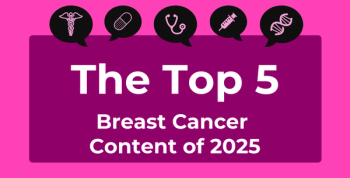
Highlighting Disparities in Myeloma Outcomes, the Impacts of Comorbidities
Key Takeaways
- Disparities in multiple myeloma outcomes are linked to income and geographic location, with lower-income and rural patients experiencing higher mortality rates.
- Limited access to insurance, novel therapies, and specialized healthcare resources contribute to these disparities, particularly in underserved communities.
Disparities in multiple myeloma outcomes and the need for equitable care were the focus of 2 posters presented at the 2025 American Society of Clinical Oncology annual meeting.
Despite significant advances in the treatment of
Two poster presentations highlighted complementary aspects of this issue: one explored trends in incidence-based mortality (IBM) across income and geographic strata, and another evaluated the impact of comorbidities on disease risk and stage at diagnosis.
An
Additionally, people living in non-metropolitan or rural areas experienced higher mortality rates (6.14 per 100,000) compared with those in metropolitan areas (5.94 per 100,000). Although overall IBM rates declined across all groups over the 21-year study period, the relative gap between lower-income or rural patients and their higher-income, urban counterparts remained stable.
Researchers attributed these discrepancies to differences in insurance coverage, access to novel therapies, and fewer specialized healthcare resources in underserved communities. Rural patients often need to travel long distances to access oncologists or cancer centers, and low-income individuals may delay care due to high costs or inadequate insurance coverage. Additionally, clinical trials and advanced diagnostics are more commonly available at large academic centers located in large metropolitan areas, which are often inaccessible to rural populations.
“These findings call for targeted interventions to reduce these disparities and further research to address the underlying causes, ensuring equitable access to advancements in myeloma care,” researchers urged.
In a separate retrospective chart review of 267 patients with confirmed multiple myeloma, published in the
CKD emerged as a significant risk factor for poor outcomes. Patients with CKD were more likely to have high-risk multiple myeloma (8.4% vs. 1.7%; P = .019), be diagnosed at R-ISS stage III (11.0% vs. 1.4%; P < .001), and experience mortality (12.3% vs. 4.0%; P = .026) compared with those without CKD. Additionally, AF was more prevalent among high-risk patients compared with standard-risk patients (15.9% vs. 6.7%; P = .028). No other comorbidities demonstrated statistically significant associations with risk stratification or disease stage.
Researchers speculate that CKD may contribute to delays in multiple myeloma diagnosis, potentially due to overlapping symptoms or complex disease management needs, calling for heightened awareness and improved understanding of this to improve outcomes. Multiple myeloma frequently co-occurs with chronic conditions, particularly in older adults. CKD is a common comorbidity in patients with multiple myeloma, particularly among older adults, and this association is gaining importance as both the population ages and chronic disease burden increases.3,4
These studies highlight that multiple myeloma outcomes are not solely determined by disease biology or available therapies. Common barriers to care, including income level, geographic location, and clinical complexity related to comorbidities, continue to significantly impact diagnosis, treatment, and patient outcomes, including survival.
References
- Kenmoe J, Rabadi A, Arvind K. Income and location divide in myeloma outcomes: A call for equitable care. Poster presented at: American Society of Clinical Oncology Annual Meeting 2025; May 30 to June 3, 2025; Chicago, IL.
https://www.asco.org/abstracts-presentations/ABSTRACT502912 - Palathingal A, Budak-Alpdogan T, Ashraf F, Parsi M. The effect of health co-morbidities on outcomes in patients with multiple myeloma. JCO. 2025;43:e19529-e19529. doi:10.1200/JCO.2025.43.16_suppl.e19529
- Watson KB, Wiltz JL, Nhim K, Kaufmann RB, Thomas CW, Greenlund KJ. Trends in multiple chronic conditions among US adults, by life stage, Behavioral Risk Factor Surveillance System, 2013-2023. Prev Chronic Dis. 2025;22:240539. doi:10.5888/pcd22.240539
- Li S, Gong T, Kou C, Fu A, Bolanos R, Liu J. Clinical outcomes associated with chronic kidney disease in elderly Medicare patients with multiple myeloma. Clin Lymphoma Myeloma Leuk. 2021;21(6):401-412.e24. doi:10.1016/j.clml.2021.01.015
Newsletter
Stay ahead of policy, cost, and value—subscribe to AJMC for expert insights at the intersection of clinical care and health economics.









































